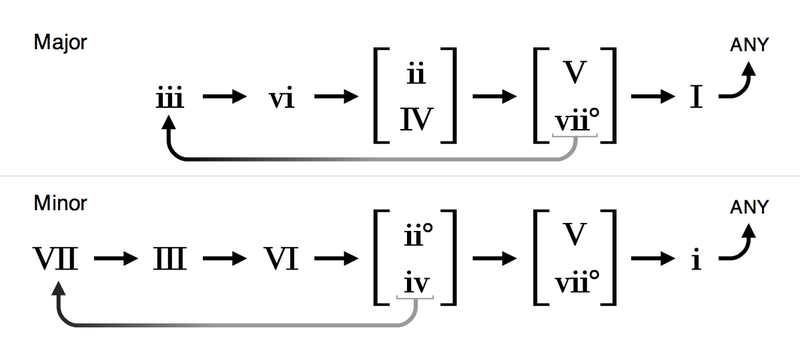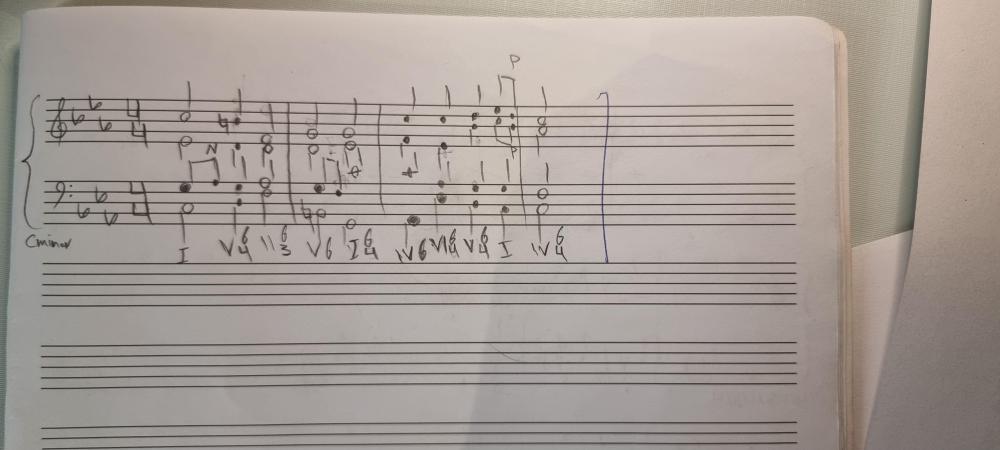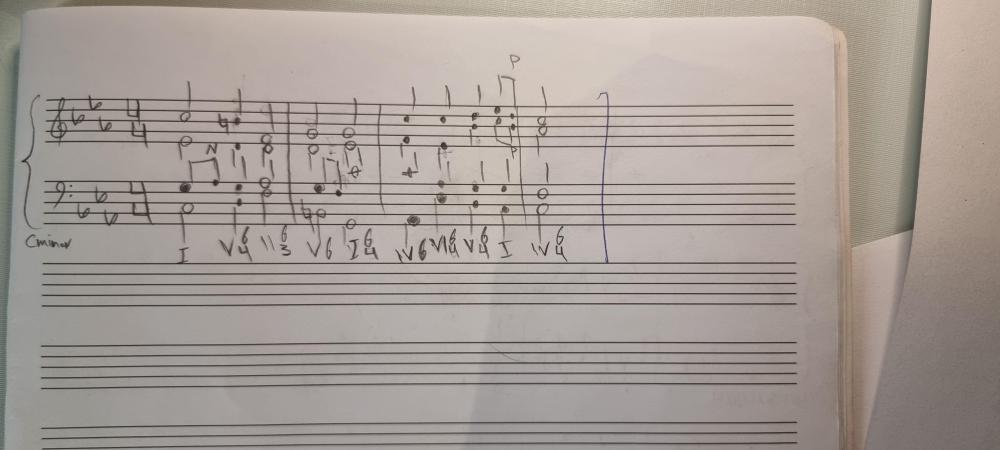All Activity
- Past hour
-
"Turmoil" for Brass Quintet | Kyle Hilton (UncleRed99)
TristanTheTristan replied to UncleRed99's topic in Chamber Music
I like the dynamics added. Sadly the rhythm didn't make total sense at the start to me. Especially not the triplets. Than there it is transposition did with an incredibly good use of dissonance. Sounds like how you describe it. Congratulations! The problem is that 'Turmoil' means uncalm, but this was medium-calm to me. -
Movement 1 Another Stravinsky styled piece... Anyways, my favourite part was bar 11 to 30. The rhythm sometimes is random, but feels like poco accelerando. I saw a cadenza at bar 37 and 45 to 46. I like the chromatic feel. As Omicron said, you have a lack of dynamics and not enough moments that are not tutti. You should add more of these. In contrast with Omicron, I believe the ending made perfect sense. It is also late, here, so I will continue later. Please be patient.
-
Finale in Am for violin and background
TristanTheTristan replied to semotivo's topic in Chamber Music
Else, it is nice! -
Finale in Am for violin and background
TristanTheTristan replied to semotivo's topic in Chamber Music
I don't like perfect fifths, by the way. -
Finale in Am for violin and background
TristanTheTristan replied to semotivo's topic in Chamber Music
And background............ Anyways, nice theme, but it is a little bit empty. If you wanted to be minimalist, then there is no problem with that. -
so yeah. I do improvise
-
I am also in a jazz band.
- Today
-
Is this homework? Or just self-study? Hopefully not the former lol Assuming you're studying both voice-leading and harmony, there are a lot of problems, but the foundations are there! All of your chords have all the chord tones present, which is a great start and, for the most part, you correctly identified your non-chord tones. Measure 1: a. Get in the habit of putting serif lines on all of your major Roman numerals. Most teachers will mark you down if they just see a v because they can't tell if it's major or minor. b. No retrogressions: in the first measure, your V (dominant) chord goes to ii˚6 (predominant), which isn't allowed. I've attached a chord chart for you. c. @Henry Ng Tsz Kiu is right. Leading tones in the outer voices must resolve up to the tonic in the next chord. d. This bar has five beats in it, despite the 4/4 meter. e. And, yes, Henry's also right that your neighbor tone creates a parallel fifth against the alto. Measure 2: a. Your first V6 chord's tenor moves down to the seventh (F) as a passing tone, and sevenths must ALWAYS resolve down, so it should go to E-flat in the next chord, which it doesn't. b. Same issue with leading tones in the outer voices, but this time in the bass. The B-natural should move up to C, which fixes the issue @Henry Ng Tsz Kiu mentioned about avoiding 6/4 chords unless they're serving one of the four functions he mentioned. c. The tenor is only three beats long. Measure 3: a. Bit of a large leap from G to C in the soprano, but this isn't a huge deal. Technically doesn't break any rules, except we want to see it resolve in the opposite direction of the leap. b. The first 6/4 chord here isn't passing, neighboring, pedal, or cadential. If your 6/4 chord requires a leap either in or out, chances are it's not correct, unless it's cadential. c. The second 6/4 chord here is technically passing, but wrong to be coming out of another 6/4 chord. d. No minor v's (yes, minor v's exist, but students are taught to avoid them). If you did make the B-flat a B-natural, you still have a problem because the alto has to leap by an augmented or diminished interval, which is not allowed. Measure 4: a. I think you're misunderstanding what a plagal cadence is: the piece should still end on i, but approached by iv, not ending on iv. Plagal cadences aren't really a thing anyways... long story, but they're more often extensions to previous cadences. I would stick to HCs, PACs, and IACs, unless you're explicitly trying to work with plagal motion. b. End on a root-position chord, not a 6/4. c. The last two beats of this bar have too big of a space between the tenor and alto. Voices should be no more than an octave apart from each other, except for the bass relative to the tenor. There's a reason why students HATE learning this stuff, because it feels arbitrary, and it is. Useful in some cases, for sure, but very arbitrary. You should be proud that you're trying to learn a very niche and difficult thing. Keep at it!
-
Tunndy started following Fantasy impromptu Orchastrated
-
https://youtu.be/7S0fxQVLeA0
-

the 3rd Movement Of Moonlight Sonata orchasrated
Thatguy v2.0 replied to Tunndy's topic in Orchestral and Large Ensemble
psh, easy, just laboriously enter each single note from the score for 17 hours j/k 😛 -
the 3rd Movement Of Moonlight Sonata orchasrated
Tunndy replied to Tunndy's topic in Orchestral and Large Ensemble
@Thatguy v2.0 Thank you!😁 I tried converting the time signature to 4/4, but sadly there are triplets in the midi I downloaded, so converting the time signature would make them spread across two measures, which is impossible, so musecore didnt let me. I will! And thank you for your comment :] -

the 3rd Movement Of Moonlight Sonata orchasrated
Thatguy v2.0 replied to Tunndy's topic in Orchestral and Large Ensemble
Hey cool! You should keep making videos, you have an entertaining personality 🙂 This is a great thing you're doing, and hopefully you've learned more about orchestration in the process. I would make sure your score is set up properly, just off the cuff I noticed you have this in 3/4. Just change the time sig. to 4/4 or common time, that way you can really see and learn from the masterful syncopation in this. Nice work, share your future videos here! -
Hi @Kian, Welcome to the forum! On the exercise, there’s a parallel 5th in b.1 for alto and tenor. The B natural in b.2 bass should go up to C instead of downward to G. Also be careful of the usage of second inversion chords. Mainly the 6 4 chords are for cadential, passing or neighbouring, but except the V 64 chords are for in b.3 all the other second inversion chords aren’t used properly, esp. the end! At least in SaTB setting the cadence would end on a second inversion chords! Thx for joining us! Henry
-
Henry Ng Tsz Kiu started following Harmonized review
-
Kian started following Harmonized review
-
-
Kian joined the community
-
Please check the correctness of the harmony in the image and are the functions and cadence correct? Is there an error? Can we call the cadence plagal? If there is a problem with this harmony, please write🫡
-
the 3rd Movement Of Moonlight Sonata orchasrated
Alex Weidmann replied to Tunndy's topic in Orchestral and Large Ensemble
Don't think I would've attempted to orchestrate (or-castrate) this sonata; but looks like you had fun with it! I'd love to hear this with the piano part muted. -

Fall 2025 Halloween Competition
Thatguy v2.0 replied to PeterthePapercomPoser's topic in Monthly Competitions
I declare my intent to participate in the competition- 1 reply
-
- 1
-

- Yesterday
-
Halloween Music - Tis the Season
Alex Weidmann replied to Vonias's topic in Orchestral and Large Ensemble
Scotland actually, and it's Nessie! 🤪😂- 1 reply
-
- 2
-

-

- Last week
-
Cool! Actually, had forgotten for a while that I posted this thread and did repost the quartet in a thread that got some views...in 38 years, and about five attempts, my closest thing to a string quartet! The bowings, dynamics, and expression markings are in the paper manuscript. This was written in a garage smoking a pipe, with a cd box set of Mozart quartets and the score at hand. I can see why some might not like the sudden transitions, but I guess I just wanted that first movement to be peripatetic. The work could be considered overscored! I'm not revising it 16 years later. I don't mind if the quad chords are rolled and rough! Posted in the other thread for this piece: I have a kind of personal "program" for the first and second movements, that I came up with long after the quartet was written! The first movement is a conversation between me and Dmitri Shostakovich, with Beethoven and Brahms politely listening, and Antonin Dvorak keeps bursting in the door drunk, whistling his latest theme! The second movement, Courante and Fugue, is even funnier: the Courante sounds to me like the barrel organ is out of tune at the carnival, and the fugue sounds as if Beethoven, whilst sketching out a fugal section in his late quartets, was even drunker than usual...
-
Alright, more bass movement in ambience, and bass timbre. Right, so work on the bass. I can do that. Yes, I was personally asked to tone the music down a bit. hahaha
-

Nocturne in C-sharp minor
Mooravioli replied to Henry Ng Tsz Kiu's topic in Piano Music, Solo Keyboard
My Brotha, Henry A very talented 16yo you must have been, in writing this work. There were so many musical ideas I couldn't accomplish/think of at that age, since I still remember trying to write my sonata in the style of Mozart. Perhaps, this will be inspiration for me to revisit and revise a few of my old melodies. As for your work, the main melody is quite memorable, and I especially enjoyed the F major variation of it. My only main concern is the incomplete fugue; I think the subject you have has a lot of potential, do consider extending it into a fully fledged fugal variation, I'm sure it will sound superb! Another thing I've noticed in this work is that it showcases quite a few modern touches, including the quick switch between neopolitan and dominant harmonies + occasional pentatonicism.







